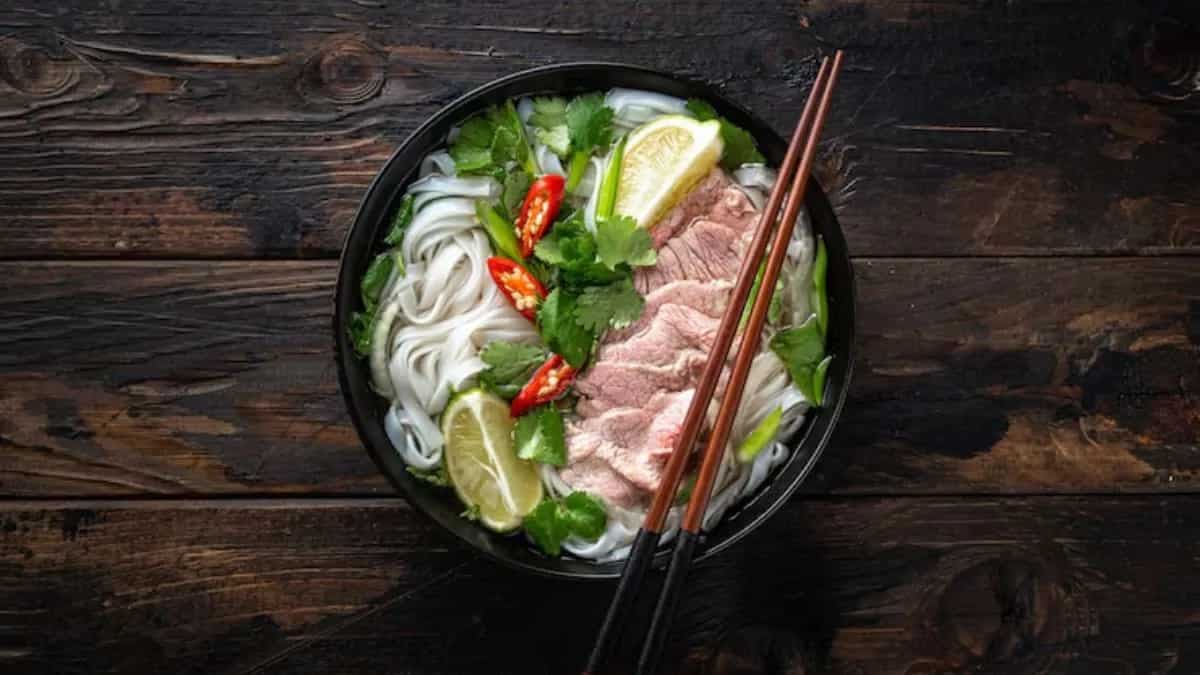Food is not just about taste, but it is also about civilisation, culture, and tradition. Many of us unknowingly mispronounce the well-known dishes from around the world. Though mispronunciation may seem insignificant, knowing the correct way honours the origin of the dish and even enhances the culinary experience. Some foods, such as croissants, bruschetta, or pho, carry subtle pronunciations that show the native language of their origin and cultural roots. Beyond just the pronunciation, these dishes hold unique textures, flavours, and preparation methods that make them loved around the world.
Croissants are crispy and buttery, pho is fragrant and delicate, and quinoa is nutty and adaptable. Knowing how to pronounce these foods correctly allows you to fully appreciate their roots while enjoying the flavours they have to offer. Here are five famous foods that are commonly mispronounced by almost everybody, along with tips on accent and a glance at what makes them special.
Croissant (pronounced: krwah-sahn)
The buttery, flaky French cuisine called croissant is often mispronounced as 'kro-sant.' Croissant is prepared from layered yeast-leavened dough loaded with butter, which has its signature airy, crisp surface. Enjoyed for breakfast over a cup of coffee, it has a soft, slightly sweet flavour with a golden, caramelised cover. The French pronunciation highlights a soft ending, '-sahn,' which grabs the pastry’s grace. Ideal for sandwiches or just with jam, croissants are a culinary icon of French patisserie culture.

Quinoa (pronounced: keen-wah)
Often pronounced as 'kwin-o-ah' or 'kwin-uh,' quinoa is a grain-like seed hailing from South America. It has a slight nutty flavour and a light, fluffy consistency when cooked. Ideal for salads, bowls, or porridge, it is rich in protein, fibre, and essential nutrients. Quinoa is an adaptable ingredient that works well in both savoury and sweet recipes. The proper pronunciation, 'keen-wah,' marks its Quechua roots and adds realism when examining this superfood.
Bruschetta (pronounced: broo-skeh-tah)
Commonly misspelt as 'broo-shetta,' bruschetta is an Italian dish that consists of grilled bread rubbed with garlic and loaded with fresh tomatoes, basil, and some dressing of olive oil. The crunchiness of bread, the topping of juicy tomatoes, and the flavour of basil enhance the taste. In Italian, the 'ch' is pronounced like a hard 'k,' which makes it 'broo-skeh-tah.' It is a simple yet elegant dish that showcases Italian flavours, ideal as a party starter or a snack.

Pho (pronounced: fuh)
It is a Vietnamese noodle soup that is often mispronounced as 'foe' or 'fee-oh.' Pho includes rice noodles served in an aromatic broth prepared with beef or chicken, star anise, ginger, and other spices, and garnished with fresh herbs and a squeeze of lime juice. The broth is fragrant and savoury, the noodles are tender, and the herbs add freshness to the dish. Correct pronunciation is short and soft tone, 'fuh,' reminiscent of its Vietnamese origin. Pho is a comforting food staple in Vietnam, perfect for when you want to have something comforting and satisfy your hunger.
Edamame (pronounced: eh-dah-mah-may)
Often pronounced as 'ee-da-may' or 'ed-a-may,' edamame are young, green soybeans that are often boiled or steamed and lightly salted. These beans are slightly sweet, soft, and loaded with protein and fibre. Commonly served as a snack in Japanese cuisine, edamame can also be tossed in salads or even stir-fries. The correct pronunciation is 'eh-dah-mah-may,' which highlights its Japanese origin and highlights the culinary experience of this healthy, vibrant legume.



